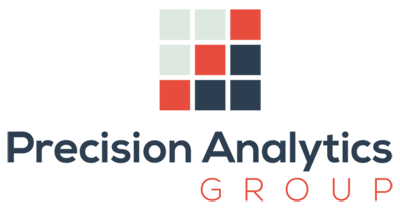Several months ago, I wrote a blog discussing the strategies of preparing for the Alteryx Designer Core Exam. Now I have returned to share my experience on the exam. Strap in and let us get right down to it.
The Right Mental Space
I despise taking exams and it does get into my head. I think to myself, “I do this stuff daily in my work. Why do I need to take an exam to prove something I already know?” The answer to that is to justify to other potential employers that you do know enough to be considered an expert in this field. Knowing that I hate exams, it was important for me a reassure myself to just be calm and trust my Alteryx experience. This can be as simple as taking a deep breath and/or doing additional preparation before you take the exam. I did both. Clear your mind and be focused.
I wrote up flash cards for each of the tools covered on the exam. This reinforces what a tool can or cannot do. Forcing myself to write it down and comprehend it reinforces this for me. Even though I use Alteryx regularly, I do not know everything about a tool. I tried to learn something new about that tool. For those things I do not know, I write those facts on a flashcard then apply them in a workflow to reinforce that. This helped me in fill in the gaps in my Alteryx tool knowledge. I used workflows that I had developed for clients to apply different twists to purpose of those workflows.
Two of the tools that give me fits are Crosstab and Transpose. I know what their purpose is but being able to apply them quickly with speed was something I was not strong at. I found weekly challenges to do and understood the output from each tool. Additionally, I used the examples within Designer to understand deeper. I also broke the examples to understand what can and cannot be done with the tool. I also watched an Alteryx video on Crosstab and Transpose, which literally sealed the deal for me. Check out the video below.
Core Certification Prep – Part III – Alteryx Community
All these strategies helped me tremendously in my confidence of tool recognition on the multiple-choice, mini-practicals, and practical questions. Build your momentum this way and/or any way that you learn. These strategies work for me so try them out for you. Just remember that this exam is all about tool recognition and speed. Employ whatever strategy you can to achieve this goal.
Revisiting the Format of the Exam
As stated, before the Designer Core exam is 80 questions with 73 multiple choice questions with seven practical questions. You have two hours to complete it and the exam is open resource. Ensure your mind is clear when you take the exam. No TVs on. No cell phones are on and/or in reach. Two hours go by quickly. The fact that it’s open book can lead you to a false sense of security and it will slow you down tremendously. What I did do was have Designer open with the workflows open and executed with data. Additionally, I had some examples open from some of the tools I may have had trouble reinforcing. Lastly, I had a Browser open with the Designer tools help.
I used this sparingly because I made flashcards for these facts. It was more checking questions I had already answered. I did all this BEFORE starting the exam
Pacing Yourself During the Exam
The first thing I did was that I went through the entire exam once and downloaded all the practical files so that I had them. If you do this strategy, remain focused and just download the files. Do not try to answer questions along the way through the exam. I want to have everything in place for when I get to the practicals. I made sure that I answered every practical question. Every question is important, but the these are worth more points so do not give them away by not answering them. When I have struggled to finish the exam, I wasted too much time on the other questions instead of answering the practicals. That cannot happen. Those practicals could also help with the multiple-choice or true/false questions you may be stuck on.
After I finished downloading the files for the practicals, I spent no more 30 seconds on a single multiple-choice, multiple-answer, or true/false question. This can be attributed to preparation for the exam. This is where you want to be in this exam experience. This is not cramming this is truly understand why you want to use a tool given a particular situation.
I tried to finish the exam in 90 minutes (including practicals) and use the last 30 minutes to double-check my answers. I started with ensuring that all my practical answers are correct. I am not giving those points away. Next, I started at the very beginning and revisited every question. If there was a question, I was not completely sure about, I spent the time to look it up. Since I had answered every question already, I could spend the time to check this question. For the multiple-answer questions, I wanted to be sure that I did not have any incorrect choices selected. You do get partial credit for correct answers in that circumstances.
Final Words of the Wise
I never left a question unanswered. I was also driven by anger with myself to allow myself to be stressed. When I get angry about something like this, I raise my level several steps higher. Have confidence in yourself and the result will be in your favor. This is a learning experience and stay motivated. The ultimate goal is to be the best Alteryx developer you can be. My next step is to conquer the Advanced Certification and then, the Alteryx Server Certification. Walk with me and I will show you the way.
By Chris Williams
Certified Alteryx Partner
and Tableau Desktop Specialist


